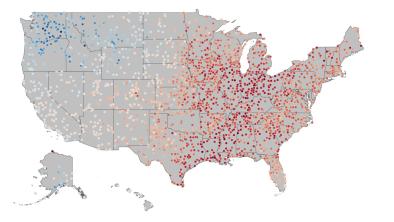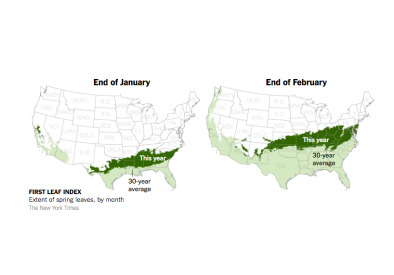Spring Has Already Sprung Almost Everywhere. Is This Our New Normal?

As the books closed this week on meteorological winter in North America (running from December 1 through February 28), the records reveal a three-month stretch that was winter in name alone—which means 2017 might well be remembered as the year our seasons officially broke.
..
- In mid-February, Oklahoma came a hot breath away from hitting 100 degrees Fahrenheit.
- Miami had at least 54 days above 80 degrees Fahrenheit, and never fellow below 50 all winter long.
- No snow covered the ground in Chicago in January or February, which hadn’t happened in the 146 years that records have been kept.
- In the northeast, unseasonably warm temperatures failed to sturdy up lake ice, cutting ice fishing season short and causing a tragic spate of drownings as victims fell through unstable ice.
- Even in America’s northernmost city—Utqiaġvik, Alaska—it was above freezing on New Year’s Day. This in a place that hadn’t seen the sun for over six weeks. This was the highest temperature recorded in Utqiaġvik in any winter ever.
...
Climate experts will look not only at those longer term averages, but also at how many record highs and lows were set as strong indicators of a changing climate. As Brian Kahn reported at Climate Central, in February there were at least 6,045 record highs recorded, compared to only 112 record lows. “That puts the ratio at 53-to-1, making it the most lopsided month on record.”
Keep in mind, as Kahn critically notes, that “in a world that wasn’t warming, that ratio would remain constant right around 1-to-1, but research has shown that hasn’t been the case with highs outpacing lows more and more with each passing decade.”
Related Content





